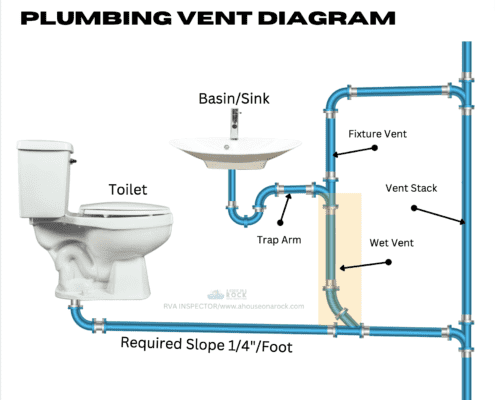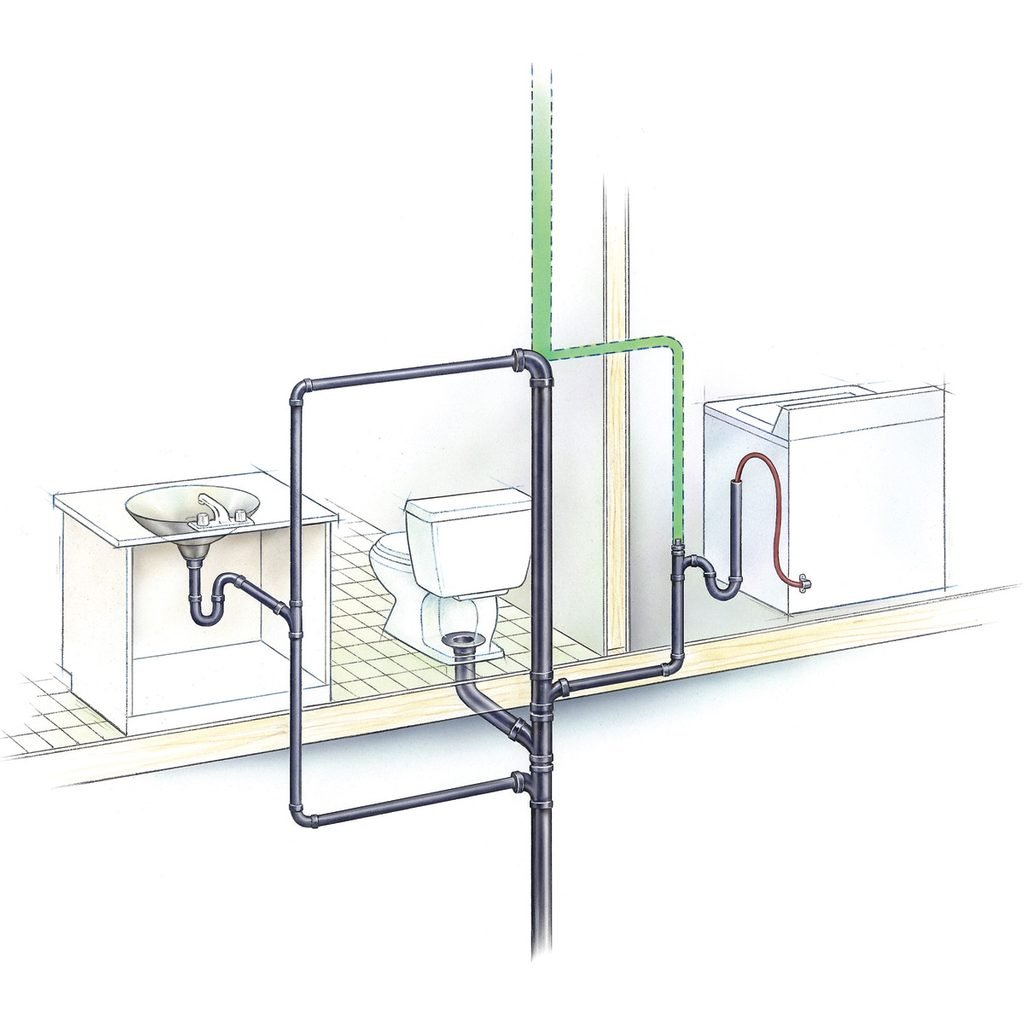Why Proper Ventilation is Crucial for Plumbing Systems
Why Proper Ventilation is Crucial for Plumbing Systems
Blog Article
Each person will have their private perception on the subject of Why Plumbing Air Vents Are Important.

Appropriate air flow in plumbing systems is commonly ignored, yet it is vital for preserving the performance and safety of your home's plumbing. Ventilation assists manage air pressure, avoid the build-up of hazardous gases, and make sure the reliable elimination of waste. In this guide, we will explore the relevance of appropriate pipes air flow, just how it functions, and the benefits it gives your plumbing system.
Comprehending Ventilation in Pipes
Ventilation in plumbing describes the network of pipelines that permit air to stream with the drain system. These vents serve numerous purposes, including controling atmospheric pressure within the pipes, protecting against sewage system gases from getting in the home, and assisting in the smooth circulation of wastewater.
How Air Flow Works in Pipes Equipments
Air Pressure Law
Correct ventilation preserves balanced atmospheric pressure within the pipes system. When water flows via pipelines, it displaces air. Without sufficient ventilation, this displacement can develop adverse stress, resulting in reduce drains or siphoning of water from catches, which can cause undesirable odors to leak right into the home.
Protecting Against Sewer Gas Accumulation
One of one of the most crucial functions of pipes vents is to prevent sewer gases, such as methane and hydrogen sulfide, from building up within the home. These gases can present major health and wellness risks and are very combustible. Vent pipes permit these gases to escape safely outdoors.
Aiding in Waste Elimination
Air flow aids in the effective removal of wastewater by preventing airlocks in the drainage system. When air can stream easily through the vents, it enables water and waste to flow smoothly via the pipes, decreasing the threat of blockages and backups.
Sorts Of Plumbing Vents
Key Stack Vent
The main stack vent, also referred to as the vent stack, is the main air vent in a pipes system. It extends from the major drain line up through the roofing system, permitting gases to get away and fresh air to go into the system.
Branch Vent
Branch vents connect to the main stack air vent and serve private fixtures, such as sinks, commodes, and showers. These vents make sure that each component has appropriate ventilation to work correctly.
Air Admittance Shutoff (AAV).
An Air Admittance Valve (AAV) is a one-way shutoff that permits air to go into the plumbing system without the demand for a standard vent pipe expanding via the roof. AAVs are frequently utilized in restorations or areas where mounting a standard vent is not practical.
Signs of Poor Ventilation in Plumbing.
Slow Draining Fixtures.
If your sinks, tubs, or toilets are draining pipes gradually, maybe a sign of poor air flow. Poor air flow can produce a vacuum effect, making it hard for water to drain pipes properly.
Gurgling Sounds.
Gurgling audios coming from drains are frequently a result of air being drawn through water catches due to adverse stress in the pipelines. This is a clear indicator of inadequate ventilation.
Undesirable Odors.
Sewer odors inside your home are a warning that your plumbing system is not effectively aerated. This could indicate that sewage system gases are not being sufficiently vented outside, bring about possibly hazardous conditions.
Typical Air Flow Mistakes.
Insufficient Vent Sizing.
Making use of small air vent pipes can cause bad air circulation and pressure imbalances in the system. It's necessary to utilize vents that fulfill the specific requirements of your pipes system.
Improper Vent Placement.
Putting vents also much from the components they offer can reduce their performance. Proper placement makes certain that air can flow freely and efficiently through the system.
Disregarding Code Needs.
Building ordinance supply specific standards for pipes ventilation. Neglecting these codes can result in a system that stops working to operate correctly and may bring about costly repairs or health hazards.
Advantages of Correct Ventilation.
Enhanced System Performance.
Properly aerated pipes systems operate much more effectively, with less blockages, faster draining pipes, and less stress on the pipelines. This efficiency expands the life expectancy of the pipes system.
Improved Air Quality.
By avoiding sewer gases from entering your home, appropriate air flow contributes to better indoor air quality, making your living atmosphere healthier and much more comfortable.
Preventing Water Damages.
Sufficient air flow assists avoid water from being siphoned out of catches, which can result in sewage system gases entering the home and triggering water damage with time.
Actions to Make Sure Proper Ventilation.
Consulting Plumbing Codes.
Constantly seek advice from neighborhood plumbing codes when developing or customizing your plumbing system. These codes give the needed standards for appropriate venting and ensure your system fulfills safety and security requirements.
Routine Evaluation and Maintenance.
Regular assessments can help identify possible air flow concerns before they end up being major troubles. Maintenance jobs, such as cleansing air vent pipelines and looking for obstructions, are crucial for maintaining the system in good working order.
Professional Setup.
For new installations or major alterations, it's smart to employ an expert plumbing professional. They have the know-how to guarantee the air flow system is appropriately made and installed according to code.
Final thought.
Proper ventilation is a vital element of any plumbing system, guaranteeing that it functions successfully and securely. By recognizing the importance of air flow, recognizing the indications of poor air flow, and taking steps to preserve your system, you can protect against expensive problems and protect your home's air top quality.
What is a Plumbing Vent and it's used for?All plumbing systems in residential and commercials construction have a plumbing vent. It doesn’t just vent unwanted odors from the drainage system to the outside; it actually serves an important purpose by supplying air to the system.
The plumbing drainage system is actually called a drainage, waste and vent (DWV) system. When water flows down the piping, an air supply (vent) is needed to allow the water to flow. Think of the vertical pipe as a drinking straw. If you plug the top end of a straw, liquid won’t drain from it.
The DWV system in your building consists of a series of pipes connected to each fixture; they extend above each fixture, and the system terminates at an open pipe that extends through the roof. This piping allows air into the system and prevents unbalanced pressures in the piping.
?The vent also prevents the system from drawing water out of a trap at the fixture with the characteristic “glug-glug-glug” as the drain gasps for air. Plumbing traps should drain smoothly and never “glug” or gasp for air.
If you have a drain that empties slowly or gurgles as it drains, this may indicate a venting problem. If you flush a toilet and the sink gurgles, there’s definitely a vent problem. It is good idea to have a Plumber check this.
https://www.ameliashomeinspection.com/blog/what-is-a-plumbing-vent-and-its-used-for

I found that content about What Is A Plumbing Vent & How Do They Work? when browsing on the search engines. Enjoyed reading our entry? Please quickly share it. Help someone else check it out. Thank-you for your time invested reading it.
Top Article Report this page